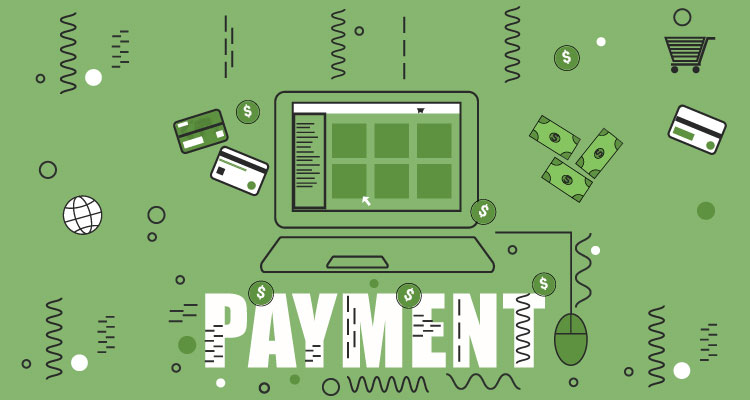Of all the responsibilities that freelancers must take charge of, there’s none more important than invoicing. After all, if you don’t invoice your client, then how can you expect to get paid for your services? Unfortunately, 77% of freelancers have reported that they’ve had trouble getting paid for their services. Since we’ve experienced this as well, we decided to put together this handy guide to getting paid online. Hopefully, this information provided will ensure that you’ll never have problems getting paid online again.
Table of Contents
ToggleKnow Your Clients
As a freelancer it seems counter-intuitive to turn down a potential client. But, it’s in your best interest to a little research before accepting a new gig from a client you’re never worked with before. Why? Because this client may have a track record of skimping on payments to freelancers who have worked for them in the past.
A quick online search could clue you-in on how legit this client really. Do they have a website and social media profiles? If so, you may be able to checkout out their website, Facebook, Twitter, or LinkedIn pages to see if they have a good reputation.
You can also Google the client’s name followed by “scam” or “unreliable” to see if there are any compliments from other freelancers.
Establish Clear Rules and Make Sure the Client Agrees
Every freelancer needs to have a set of rules before starting a new project. These rules should mainly cover your payment terms. This explains how and when you expect to be paid for your services. For example, you expect payment 30 days after the invoice is sent via PayPal.
However, you also want to discuss the scope of the work, timelines, ownership of the work, disclaimers and provisions, and cancellation terms.
It’s alright to be flexible with your rules when negotiating with the client. Just make sure that you don’t budge too much.
Once you and the client agree on these terms, have a written contract in place. This will ensure that both parties live up to their ends of the bargain.
Secure a Down Payment
As any seasoned freelancer will inform you, always get a deposit – especially when working with a new client. This helps you pay for your expenses as you work on a project, and it can help lessen the blow if the client bails on the final payment. Besides, it’s an industry standard. So don’t feel awkward asking for some sort of down payment.
How much you ask for can be negotiated. It’s common to ask for 50% down, 25% in the middle of the project, and 25% when the job has been completely finished. If you’re billing for time, you should at least invoice for one to two weeks upfront.
How to Create an Invoice
Prior to the availability of cloud-based invoicing software like Due, freelancers would have to create invoices manually using programs like Pages, Numbers, Word, Excel, or Google Docs. Thankfully, that’s not the case anymore.
With invoicing software you can quickly create and send invoices electronically using the templates provided, as well as time-tracking, tracking which invoices have been paid, sending automated follow-ups, and establishing recurring payments.
Even though invoicing software can save freelancers a whole lot of time and money, the basic components of invoices have remained the same. These include;
- Your brand’s logo.
- Invoice number, such as Invoice: 00001.
- The date the payment is expected.
- Both you and your client’s contact information.
- A list of itemized list of tasks and services.
- Chargeable taxes.
- Total amount due.
- Payment terms, such as 2% off the invoice total if getting paid online within 10 days or a a 2% monthly finance charge if the due date has passed.
- Payment options, such as PayPal, credit card, or eCheck.
As mentioned earlier, if you have recurring clients, then you don’t have to create an invoice each billing cycle. Instead, you can set-up a recurring payment option where you automatically charge a client’s bank account or credit card are withdrawn.
If you don’t have recurring clients, then make sure that you invoice promptly and frequently. Whether if it’s immediately following the completion of a task or once a week, this will keep the cash flowing into your account. It also ensure that you won’t forget to bill the client. And, the longer you wait to invoice your clients, the less likely they’ll pay your invoice.
Here is the ultimate invoicing guide you can’t live without for additional expert advice.
Types of Online Payments
With the Internet, most payments are now handled online, which makes getting paid online for your services almost instantaneous. However, when you do accept payments online, there will be some processing fees. So make sure that you compare these fees before you start accepting online payments.
With that in mind, here the most popular ways for freelancers to accept payments electronically;
- Credit or debit cards. You can accept plastic by either setting up a merchant account with a bank or using a third party payment gateway like PayPal or Amazon Payments. Be aware of the expensive transaction fees involved with this method..
- eChecks. You can also accept electronic checks through ACH processing, which is governed by the National Automated Clearing House Association. All your client has to do is enter their routing and account number, name, amount, and authorization in an online payment form or software interface. As with credit cards, there could be pricey transaction fees involved.
- eCash. These are electronic tokens or cryptocurrencies, such as bitcoin. Since the middleman is cut out, and the transaction is directly between the two the two parties, payments are almost immediate and there are lower transaction fees.
- Mobile digital wallets. These could be platforms like Square, so that a card is swiped on your mobile device, peer-to-peer apps like Venmo, or digital wallets like Google Wallet or Dwolla, accepting payments through mobile devices is rapidly becoming one of the preferred types of payments.
- Wire transfers. Old-school services like Western Union have embraced digital by allowing you to send money to a mobile phone. Wire transfers are fast and secure, but fees can be expensive. .
- Click-to-pay email invoices. When you email an invoice to a client, they can pay that invoice simply by clicking on a link. It’s another fast and convenient method.
If you want your client’s to pay your invoices more quickly, then consider accepting multiple forms of payments, such as credit cards, eChecks, and eCash. In fact, most invoicing platforms allow you to accept most forms of online payments.
What to Do When a Client Doesn’t Pay?
You followed all the suggestions listed above. But, your client still hasn’t bad your invoice. What are your next moves?
- Pick-up the phone and call the client directly to find out what the hold-up is. It could be a simple oversight.
- Be firm and persistent by calling and sending them an email or letter.
- Recruit a “bad cop” who is more forceful then you are. Plus, they don’t have the relationship that you do with the client.
- Take legal action by asking your lawyer to contact the client or take them to small claims court. Since you have a contract, the law should be on your side.
- Hire a collection agency to collect the debt.
- Write the invoice off as a business loss because it may not be worth chasing the client.
While those are the most common techniques that most freelancers take then a client doesn’t pay their bill. However, another option is invoice factoring. This is for freelancers who need cash right now and involves selling the invoice to a factoring company. The terms aren’t great, but it’s an options when you’re in desperate need of cash.
Closing Thoughts
The days of manually creating and physically mailing an invoice are long gone. You can now invoice a client electronically and receive payment within a day. Even though this makes your life as a freelancer a little less hectic, you still want to make sure that you investigate a client before starting a project, have a written agreement, accept multiple forms of online payments, and have a plan for dealing with clients who haven’t paid their invoice. Getting paid online isn’t always easy; we hope our tips helped.















